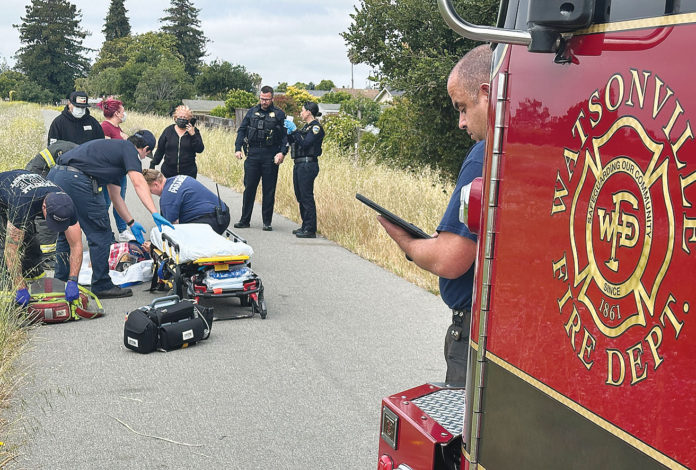
The Watsonville City Council on June 24 passed the 2025-26 fiscal budget, which cuts several vacant positions, reduces operational fees across all departments and implements a five-year capital improvement plan. The budget takes effect on July 1.
The council at Tuesday’s meeting also accepted a report from Watsonville Police Department that proposes myriad changes to the department.
The fiscal budget for 2025-26 encompasses $309.5 million in expenditures. The budget cuts a total of 14 vacant city positions to ensure the city does not fall into a deficit, according to Finance Administrative Services Director Marissa Duran.
The cuts were made across eight departments—including four from the Police Department, two from Community Development and two from Parks and Community Services. Three of the positions were cut due to expired grants.
The budget also enacts a 1% reduction of operational fees to all departments.
These cuts collectively will save the city about $450,000, Duran said.
City officials noted that although revenues to the general fund—which is financed largely by taxes, fees and intergovernmental transfers—have been steadily increasing, they cannot keep up with rising costs. That concern especially applies to personnel costs.
This strain, in combination with growing uncertainty about future inflation and federal funding, led to the upcoming fiscal year cuts, city staff explained.
Although the future is uncertain, District 1 Councilmember Eduardo Montesino expressed hope and gratitude for the city and its plans moving forward.
“We should be joyful for the investments in our communities,” he said at the meeting.
The adopted budget also puts a five-year capital improvement plan into action. The plan aims to fund “projects that align with the city council’s strategic priorities,” and expects to spend about $60.5 million on new capital projects over the five-year period. Plan initiatives include finishing the Ramsay Renaissance Park Project and the City Plaza Renovation projects. The Public Works and Utilities Department will handle the other capital projects.
This five-year plan acknowledged a backlog of “basic updates” and general maintenance, such as work on police and fire stations and community spaces, due to sparse capital funding after the 2008 recession. The city will continue to seek grants and possible federal funding for capital investment.
A range of legislative items were also passed in the budget. These include a property tax levy that will allocate a rate of 0.077% on property within Watsonville to the county Retirement Fund. Airport fees and rental fees on park facilities will rise in alignment with growing inflation rates.
Room for improvement at WPD
Tuesday night’s meeting included a presentation on the productivity of the Watsonville Police Department.
Over several months, Matrix Consulting Group—a company that has completed more than 400 police department evaluations over the past 22 years and has an 85% implementation rate—reviewed the department’s resource allocations, staffing and other issues.
Matrix president Richard Brady and senior consultant Tim Donohoe suggested that the Watsonville Police Department change the hours in which officers work.
This alternative schedule would enable a couple hours of overlap among officers. Currently officers clock in as soon as the previous shift clocks out.
In addition to adding an officer to the day shift, the Matrix team had advice on better ways to utilize police support specialists, who could have been used in more than 1,800 lower-priority calls last year but were only deployed in 311. The group suggested making other hires, including two more specialists, a dedicated training officer position and another detective.
Matrix had several recommendations surrounding traffic violation control, including adding two more officers to the division, giving parking enforcement a dedicated supervisor, and more tightly tracking the unit’s effectiveness.
The bottom line: Watsonville Police Department’s proactivity level fell below the established benchmark of 45%, with officers spending 32% of their shift in a proactive way and the rest of the time on reacting to community issues.
Watsonville witnesses about 10 hit and runs and 40 car crashes a month, 10 of which are drug or alcohol related. Donohoe stated that these statistics are above average for a city of its size. Both Matrix representatives stressed that proactive policing would be the best recourse for minimizing these infractions and other crimes.
District 6 Councilmember Jimmy Dutra pointed out the struggles the police department, as well as other departments, have had with filling positions. The 2025-26 budget cut one unfilled police officer position.
Watsonville Mayor Maria Orozco had questions surrounding the plan as well, wondering if there was “a price tag” to Matrix’s proposed initiatives. Matrix representatives said they were expecting no additional funds. They also said that the suggested actions could give officers more proactive time for other tasks, such as assisting with traffic violation control. The council unanimously accepted the report.












